Satoshi Kondo on continuing the design legacy of Issey Miyake
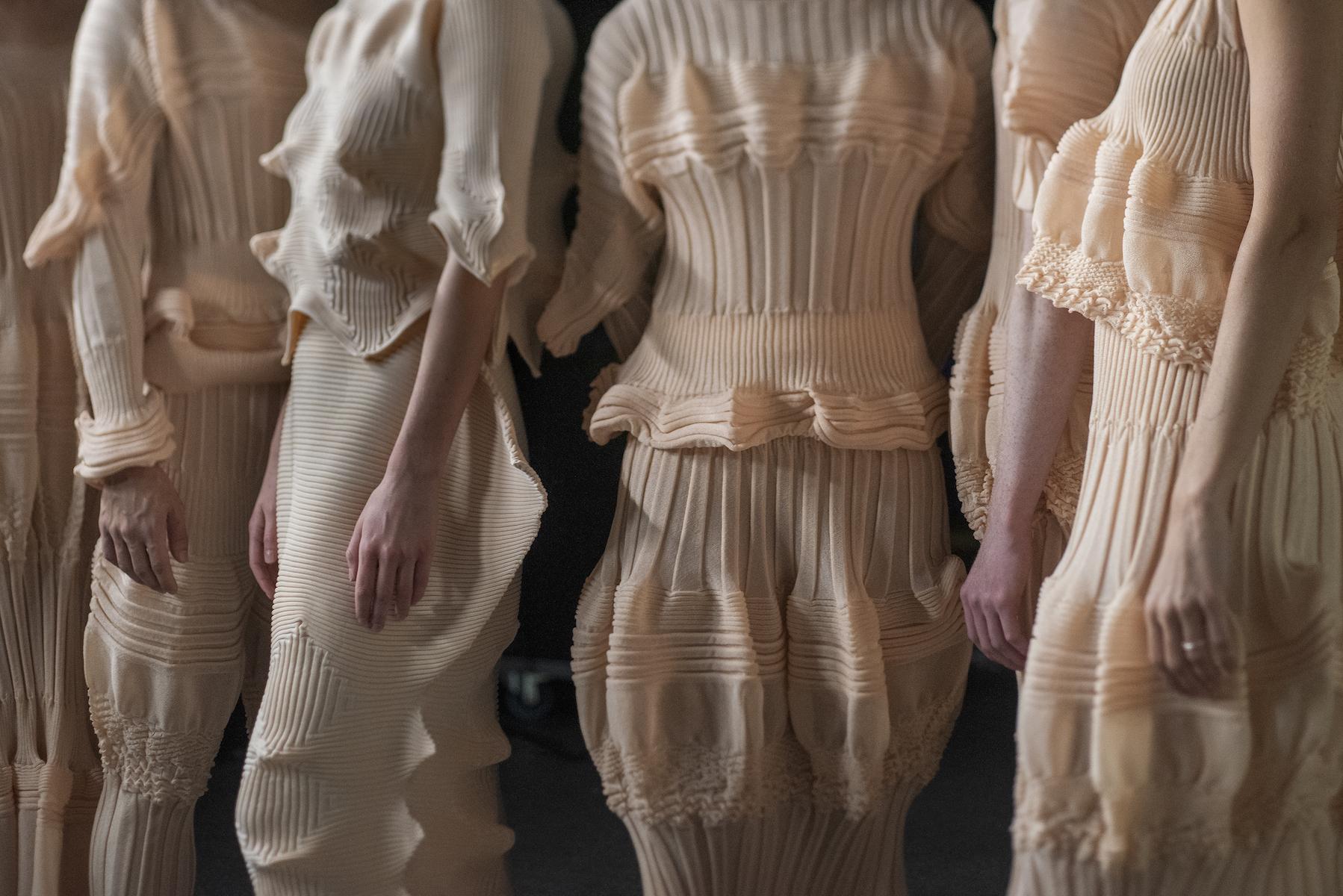
On each of the seats at Satoshi Kondo’s S/S 2023 show for Issey Miyake – held this past September at Paris Fashion Week S/S 2023 – was a piece of washi paper, a traditional form of paper from Japan which is handcrafted from the fibres of the gampi tree or mulberry bush (such is washi’s cultural importance, it is Unesco-protected). Washi has been utilised for over 1,000 years as a fabric for clothing, particularly in northern Japan – its construction means it is far stronger than regular paper – and the late Issey Miyake was captivated by it in his lifetime, utilising its unique fibres in his collections, mixed with polyester or cotton to create innovative new fabrications. Indeed, the designer’s fascination with washi speaks to his wider pioneering approach: the marriage of the traditional and the modern, handcraft with innovation, the ability to begin with a simple square of paper and end with a bold new proposition for fabric, texture or form. Washi paper is also traditionally used for origami, another historic Japanese art form which captivated Miyake, and to which his sculptural, intricately folded clothing has often been compared.
The S/S 2023 presentation was the first since Miyake died aged 84 this past August. As such, the piece of paper was embossed with words of tribute from head designer Kondo (who took the role in 2019, having worked at the brand since 2007) and the rest of his design team, while Miyake’s portrait was projected around the Porte de la Villette space prior to the show’s start. The collection itself looked towards the idea of ‘soft sculpture’, ‘kneading, carving, and shaping’ the garments in a way which recalled Miyake’s own command of body and silhouette. ‘Every collection I [have] created with my team is a reflection of what we learned from Miyake,’ Kondo says.
Here, in a conversation in the weeks after the show, Kondo speaks to Wallpaper* about Miyake’s enduring, ever-present influence and attempting to capture the same ‘unprecedented joy and wonder’ in his own collections.
Satoshi Kondo on Issey Miyake S/S 2023
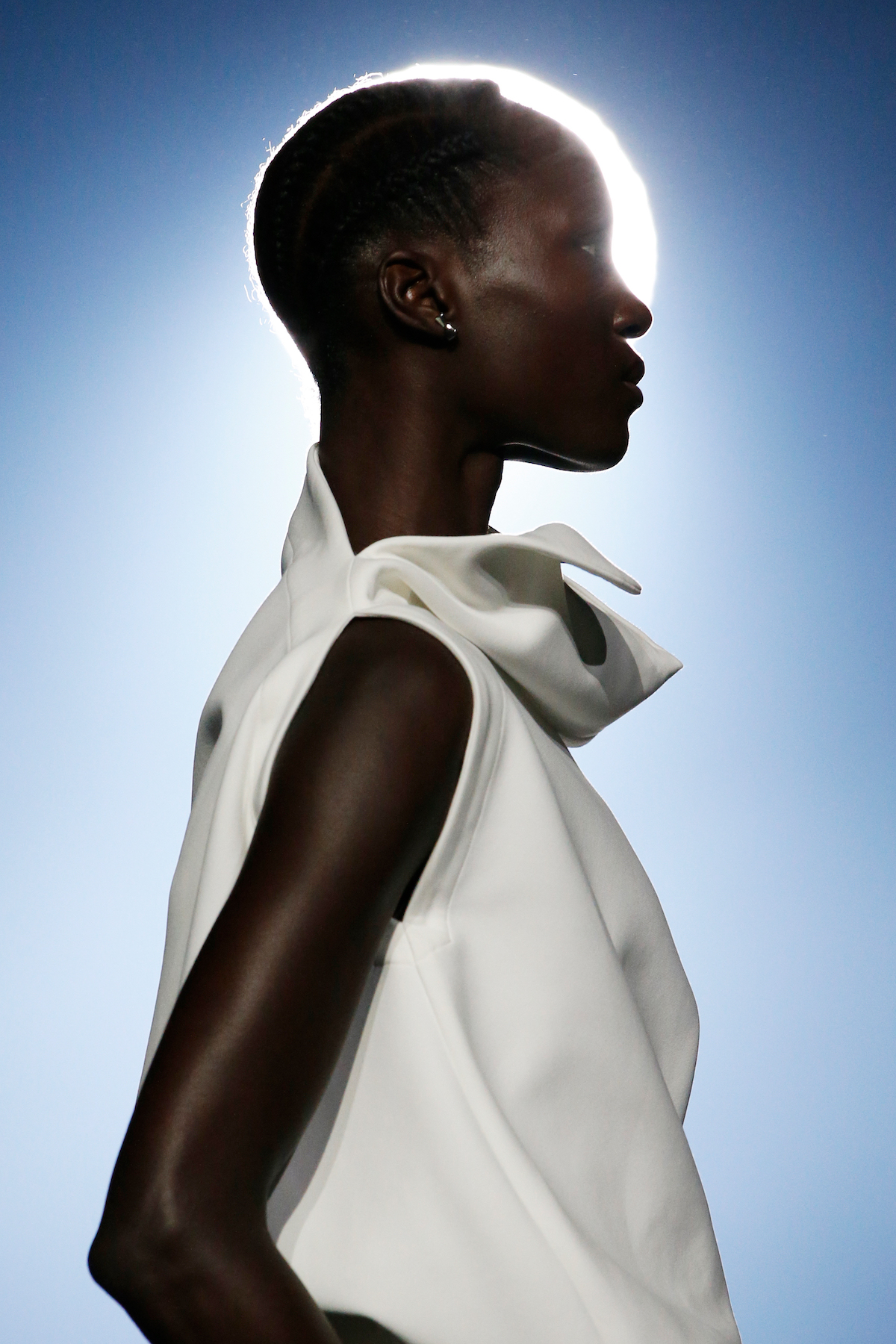
Issey Miyake S/S 2023
Wallpaper*: This was the first show since Issey Miyake’s death. How did you want to pay tribute to him with this collection, and show?
Satoshi Kondo: Every collection I [have] created with my team is a reflection of what we learnt from Miyake, as his philosophy and approach to design and making is the foundation of the brand’s identity and the source of inspiration for my [own] design work. Moving forward, as we have always done in the past, we will challenge ourselves to create original, unprecedented clothing that brings a sense of joy and wonder – building upon what is true to the brand’s identity.
For this show in particular, we put our thoughts into words in memory of Miyake and embossed them on a piece of hand-crafted washi to be handed out to the audience.
W*: Were there elements of the collection where you were particularly thinking about Miyake?
Receive our daily digest of inspiration, escapism and design stories from around the world direct to your inbox.
SK: I think his influence is present everywhere, permeating through the collection, in the way we engaged with design and making – from concept research and material development to the execution of the show – in a comprehensive way, just like Miyake did. For this collection, we made a series called ‘Torso’, where we went through the process of making torsos out of clay by ourselves and then translating them into garment forms, each to be made with a single piece of fabric, with the intention to explore original clothing [that is] like soft sculptures worn on the body.
W*: Tell me a little bit more about this idea of sculpture in the collection – how does this feature in the garments?
SK: We wanted to work with sculptures, not only the idea but the actual creative process of sculpting, because we believe that working in a creative field other than clothing design and with a different medium allows us to develop original ideas and forms. For this collection, we imagined garments that are alive and breathing like soft sculptures. Like our sculptor counterparts who all have their takes on what a torso is, we too explore the idea of body and its relationship with a piece of clothing.
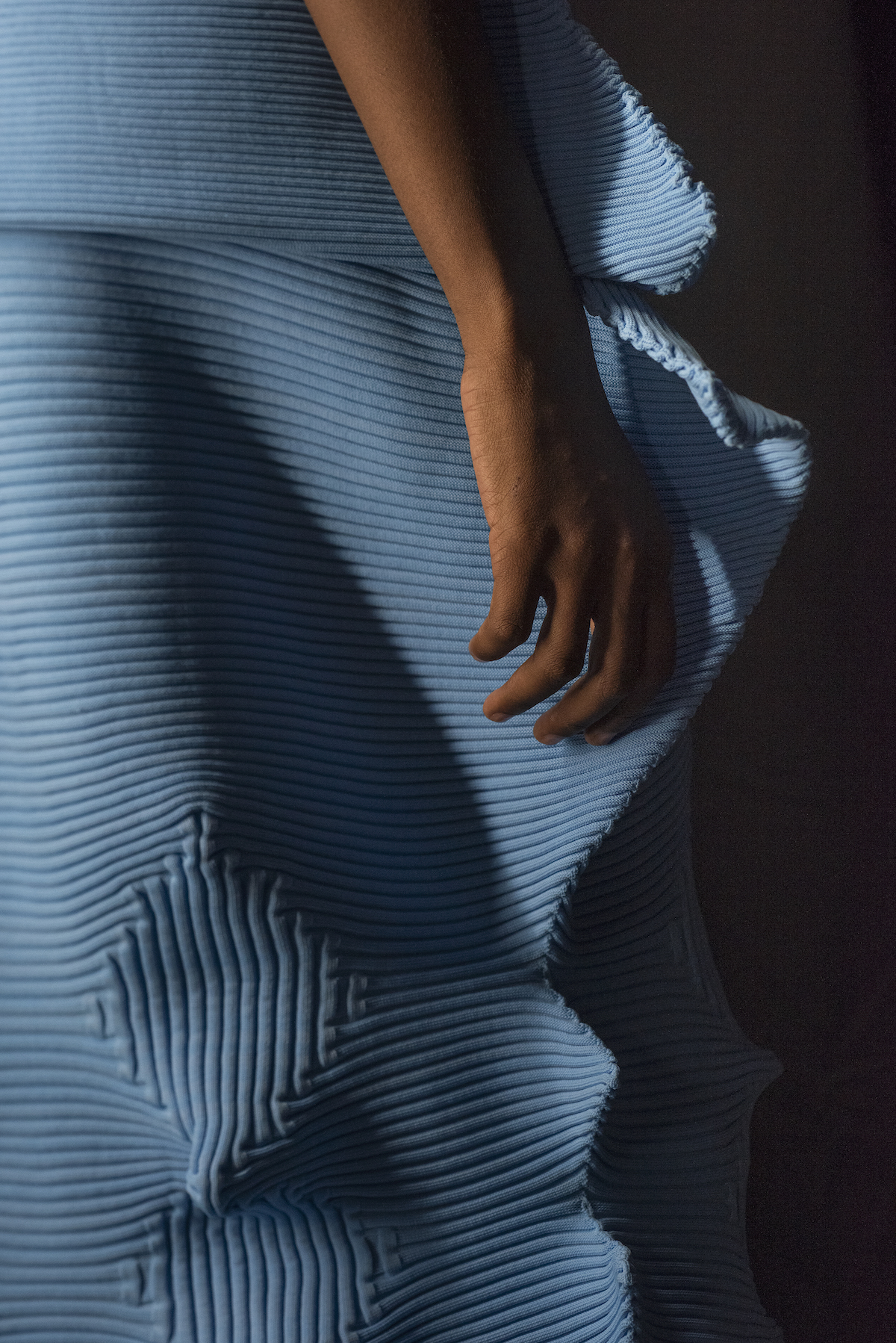
Issey Miyake S/S 2023
W*: There were some technical fabrics which were new for the brand this season. Can you tell me about them, and how they feature in the collection?
SK: The knit series ‘Linkage’ and ‘Assemblage’ employ a technology that produces a seamless knit garment from the machine, finished and ready to wear without additional sewing. While the technology itself is not new, the way we worked with the knit engineers to explore new and creative use of the technology is original, where we created garments that each integrate a variety of knit structures. At the show, the models and the dancers conveyed a sense of liveliness in knit garments like breathing sculptures, as they bounded and danced on the stage.
W*: Why did you choose to have dancers at the show?
SK: The idea of a wearer’s body is what underlies [what] we do at Issey Miyake. For the finale, the idea was to convey this sense of physicality – something that is sensuous and primitive – through dancers wearing garments in colours of a variety of skin tones, as they dance against a backdrop of dawning daylight. With this we also wanted to, as written in the quote on the washi, bring a sense of joy and hope to the audience.
W*: Tell me a bit more about this idea of joy and hope – as well as playfulness, which you mentioned in the quotation you released prior to the show. How did these ideas figure in the collection itself?
SK: We design and make garments for a sense of ease, and it is this sense of ease that we believe brings about joy. Playfulness can be present in the design and making of a garment itself, like how we play with many knit structures in the ‘Linkage’ and ‘Assemblage’ series and how they seemed to prompt the models and dancers to move and bound around.
Playfulness can also lead to wonder. It is about designing and making a garment that does not look one, especially when laid flat, and it is only the moment when you pick the garment up and put it on that you become aware of it being wearable.

Issey Miyake S/S 2023
Jack Moss is the Fashion & Beauty Features Director at Wallpaper*, having joined the team in 2022 as Fashion Features Editor. Previously the digital features editor at AnOther and digital editor at 10 Magazine, he has also contributed to numerous international publications and featured in ‘Dazed: 32 Years Confused: The Covers’, published by Rizzoli. He is particularly interested in the moments when fashion intersects with other creative disciplines – notably art and design – as well as championing a new generation of international talent and reporting from international fashion weeks. Across his career, he has interviewed the fashion industry’s leading figures, including Rick Owens, Pieter Mulier, Jonathan Anderson, Grace Wales Bonner, Christian Lacroix, Kate Moss and Manolo Blahnik.
-
 Our guide to shopping from fashion’s rising stars and independent makers this festive season
Our guide to shopping from fashion’s rising stars and independent makers this festive seasonAs part of our Uprising series – which celebrates fashion’s rising talents – Orla Brennan collates the ways you can invest in independent brands for truly special gifting
-
 Follow the white rabbit to London’s first Korean matcha house
Follow the white rabbit to London’s first Korean matcha houseTokkia, which translates to ‘Hey bunny’ in Korean, was designed by Stephenson-Edwards studio to feel like a modern burrow. Take a look inside
-
 Sean Ono Lennon debuts music video for ‘Happy Xmas (War Is Over)’
Sean Ono Lennon debuts music video for ‘Happy Xmas (War Is Over)’The 11-minute feature, ‘War is Over!’, has launched online; watch it here and read our interview with Sean Ono Lennon, who aimed to make a music video ‘more interesting’
-
 The Wallpaper* S/S 2025 trend report: ‘A rejection of the derivative and the expected’
The Wallpaper* S/S 2025 trend report: ‘A rejection of the derivative and the expected’Wallpaper* fashion features editor Jack Moss unpacks five trends and takeaways from the S/S 2025 shows, which paid ode to individual style and transformed the everyday
-
 Le Sel d’Issey: the sacred ‘energy of salt’ inspires Issey Miyake’s new fragrance for men
Le Sel d’Issey: the sacred ‘energy of salt’ inspires Issey Miyake’s new fragrance for menAs Issey Miyake’s Le Sel d’Issey launched in Tokyo this week, we spoke with Tokujin Yoshioka about his ‘radiant’ bottle design and the scent's sacred and salty inspiration
-
 The A/W 2024 menswear collections were defined by a ‘new flamboyance’
The A/W 2024 menswear collections were defined by a ‘new flamboyance’Sleek and streamlined ensembles imbued with a sense of performance take centre stage in ‘Quiet on Set’, a portfolio of the A/W 2024 menswear collections photographed by Matthieu Delbreuve
-
 In fashion: the defining looks and trends of the A/W 2024 collections
In fashion: the defining looks and trends of the A/W 2024 collectionsWe highlight the standout moments of the A/W 2024 season, from scrunched-up gloves and seductive leather ties to cocooning balaclavas and decadent feathers
-
 Revisiting the showstopping runway sets of men’s fashion week
Revisiting the showstopping runway sets of men’s fashion weekAs Men’s Fashion Week S/S 2025 draws to a close, Wallpaper* picks the season’s most transporting runway sets, from giant cats at Dior Men to a ‘fairytale ravescape’ at Prada
-
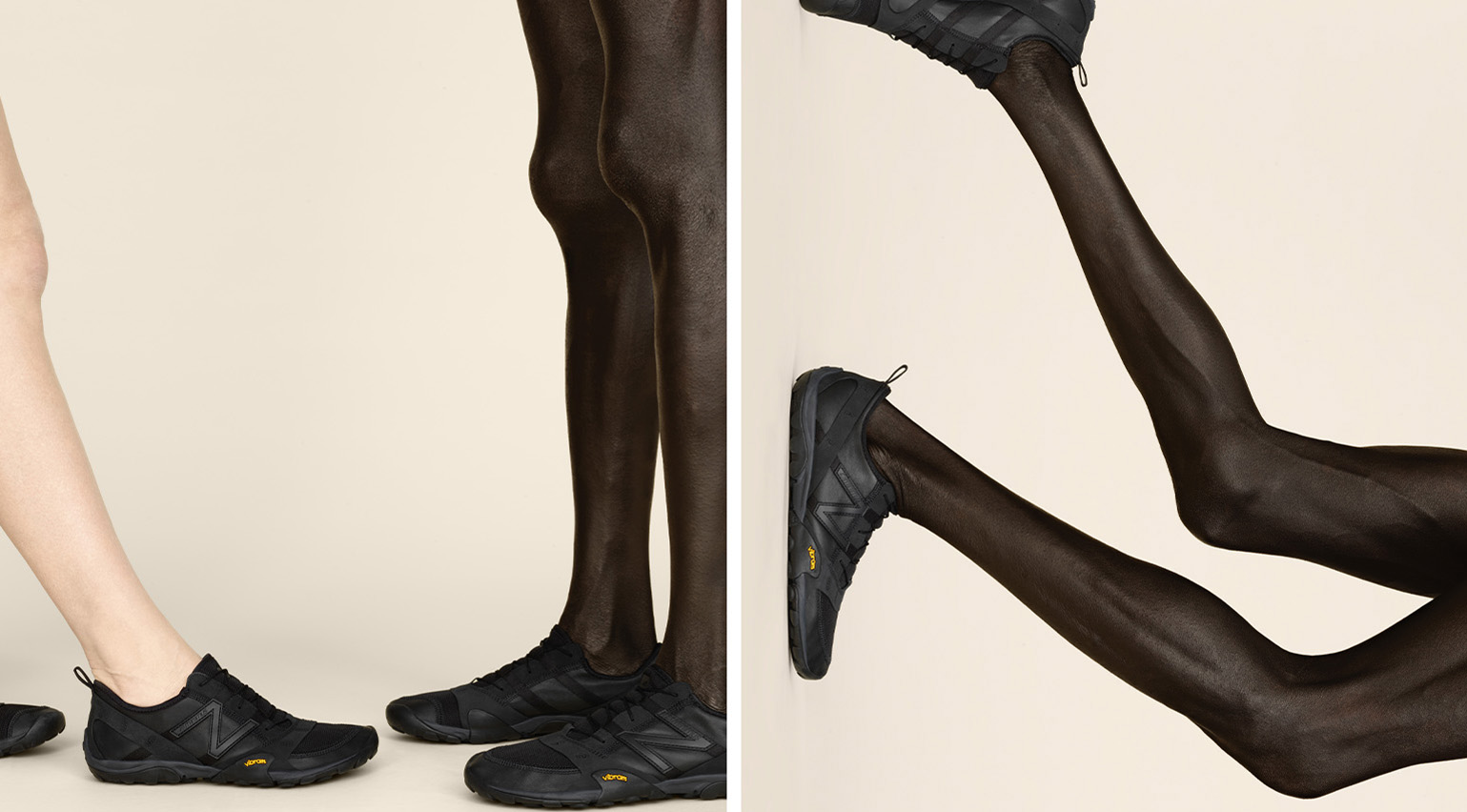 ‘Sensuous physicality’: Issey Miyake reveals barefoot sneaker collaboration with New Balance
‘Sensuous physicality’: Issey Miyake reveals barefoot sneaker collaboration with New BalanceThe Issey Miyake x New Balance MT10O is based on minimalist running sneakers from the 2010s, designed to replicate the feeling of running barefoot
-
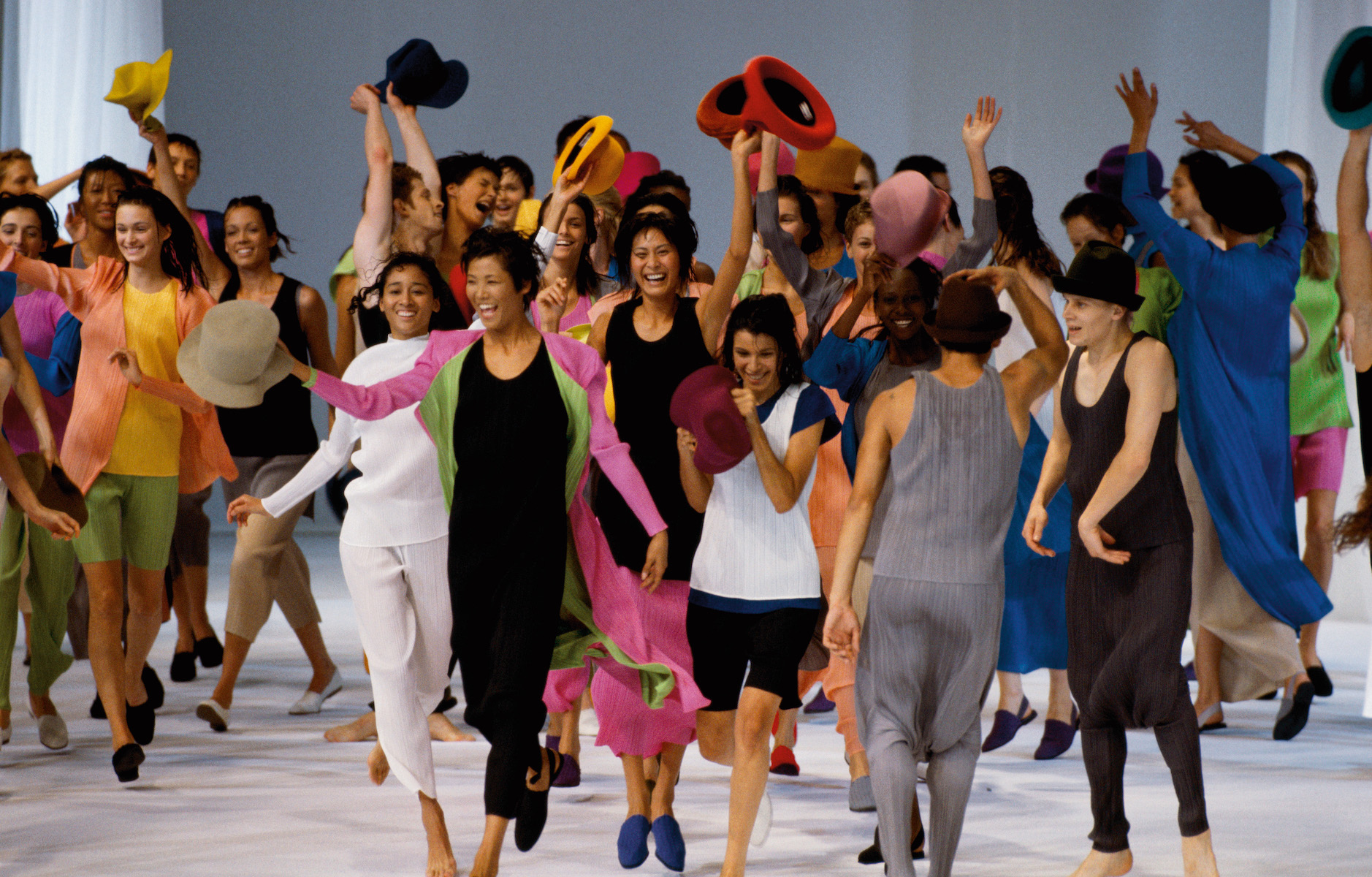 ’Issey Miyake: 1960 to 2022’ is a definitive guide to the pioneering Japanese designer
’Issey Miyake: 1960 to 2022’ is a definitive guide to the pioneering Japanese designer’Issey Miyake: 1960 to 2022’ is a new Taschen book that provides a comprehensive overview of the pioneering Japanese designer’s ’poetic but pragmatic’ work
-
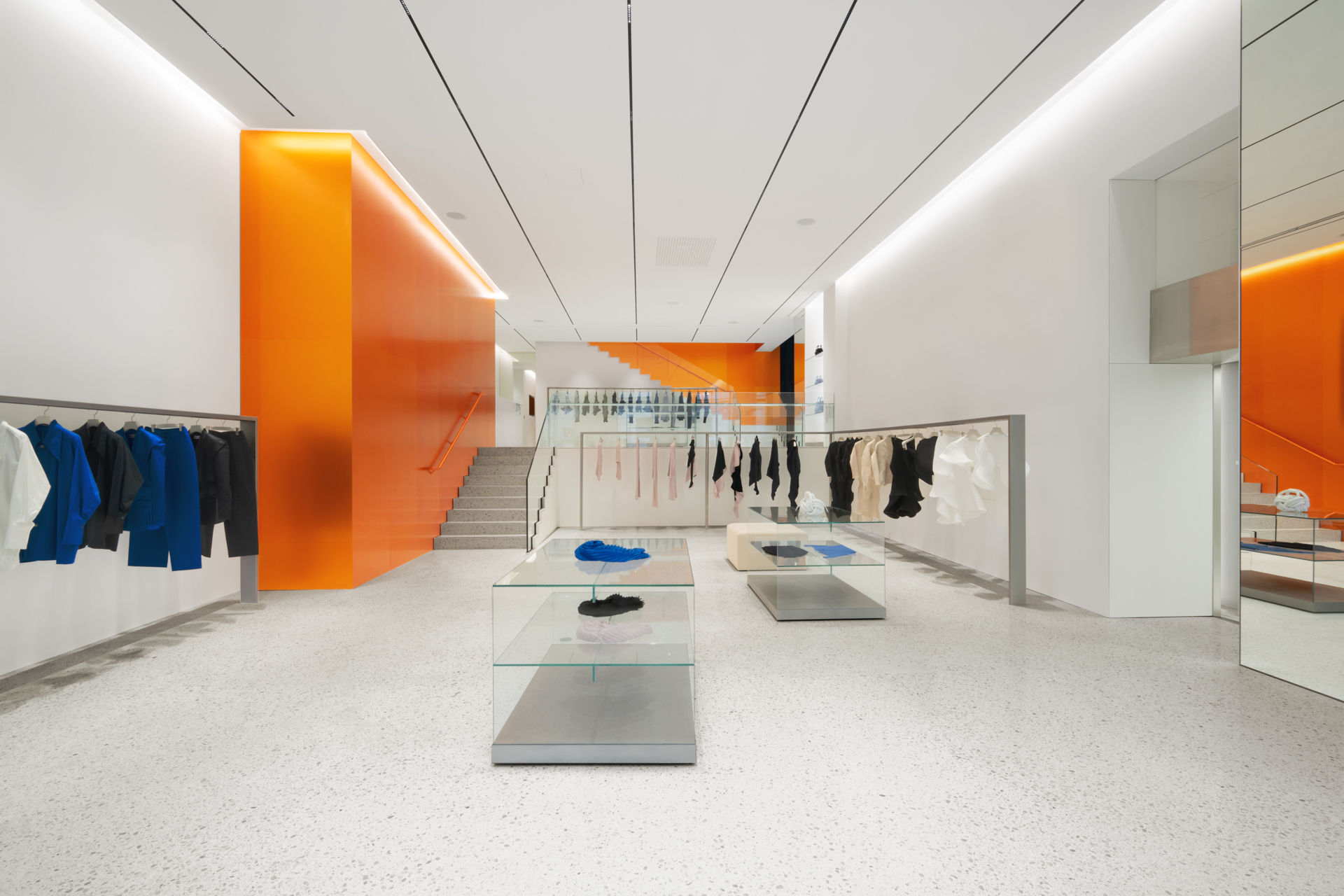 Issey Miyake’s radiant new Paris store celebrates its deep-rooted links to the city
Issey Miyake’s radiant new Paris store celebrates its deep-rooted links to the cityIssey Miyake’s new flagship store on Paris’ Rue François is designed by Tokujin Yoshioka, featuring a luminous orange wall designed to evoke the rising sun